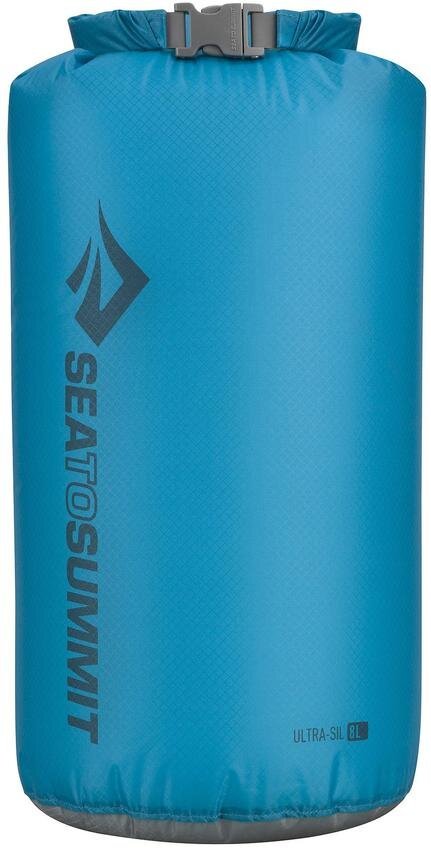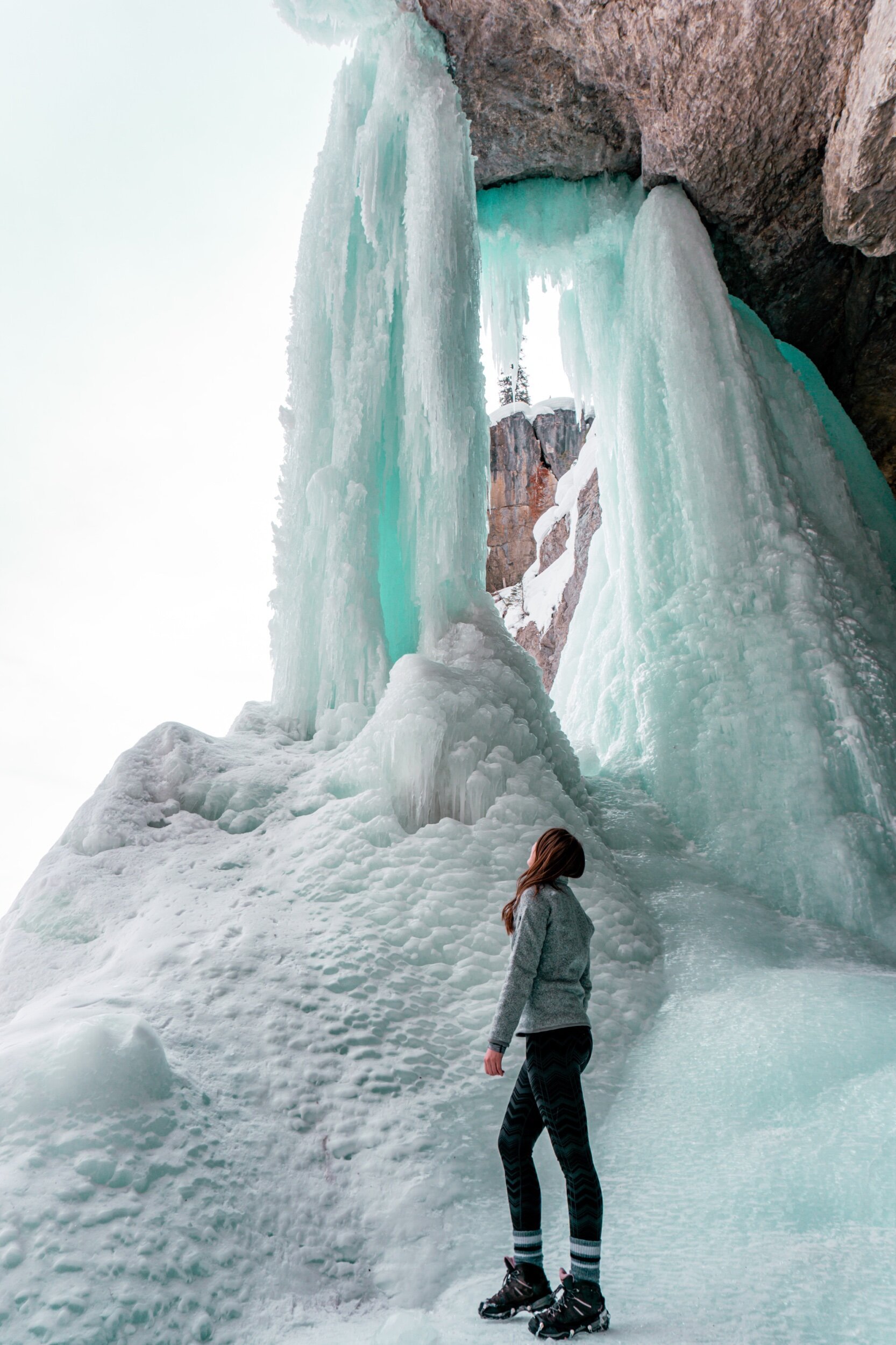5 Tips for Hiking in Unpredictable Weather
Here are my top 5 tips on how to prepare for hiking in unpredictable and cold weather
Hiking in not so great weather is one thing, but hiking in the mountains during not so great weather is a completely different ball game. The forecast for days could predict beautiful, clear blue skies but within minutes, all of that can change very quickly. Mountain weather is highly unpredictable and when heading out, it is always key to hope for the best, but prepare for the worst. I’ve compiled my top tips on how to do just that!
Note: While this blog post isn’t sponsored, there are affiliate links which means I will earn a small commission if you choose to purchase an item I have shared (at no additional cost to you). These funds go right back into creating content just like this! Thank-you for the support!
Check the forecast. Assess the situation. Be aware of all possibilities
We all know that weather forecasts aren’t 100% accurate but it can at least give you an idea of what to expect that day. It is a way to help you decide the extent of the gear you should be packing. Keep in mind, if you are summitting a mountain, the forecast you are reading for the nearest location could still differ significantly when you’re up at higher elevations exposed to the elements!
Another thing to keep in mind is that wind and rain being reported in shoulder season differs from wind and rain being reported in the summer. Summer showers are usually nothing too detrimental and won’t pose too much of a risk on the trail. That being said, there are still summer weather conditions you need to watch for, like lightening and thunderstorms — especially if your time in the mountains includes being on any body of water. Being at higher elevations, and on the water, increases your risk of being struck, and that just wouldn’t be any fun!
If you’re heading out for a hike in the summer and it is calling for light showers, you are likely fine. If you’re heading out for a 3 hour kayak ride and there’s a possibility of a thunderstorm in the forecast, it is probably best to make the decision to not make that ride. It all depends on the situation, activity and comfort level of the person. Remember, if at any point you feel conditions are making it unsafe, never hesitate to either call it a day and make your return back if possible, or set up your shelter. Weather conditions are unforgiving.
Choose the proper clothing for layering. Pack extra layers.
Staying dry is a key point to comfortability on the trail whether it’s warm or cold hiking. There are a number of materials designed to help keep you warm, while wicking sweat and keeping you dry — merino wool, fleece, nylon & synthetic alternatives to down. I personally wear a Merino 150 Baselayer Longsleeve, as well as Merino 150 Baselayer Leggings from Smartwool — a personal fav!
In my mind, it is always better to have extra than not enough. When picking clothing, you want to remember to keep it packable and light. This will help save room in your pack. When I head out on the trail I always pack and/or wear baselayers, a light-weight 1/4-zip top, Patagonia Mid-Weight 1/4 Zip Sweater, a insulated puff jacket and a water/wind proof jacket. I also always remember to pack extra pairs of merino socks, mittens and toques.
Here are some suggestions from my followers for base layers:
Smartwool Merino Sport 150 Graphic Tee
Icebreaker 250 Vertex LS Half Zip
Icebreaker 260 Zone Leggings
Kari Traa Solveig Tights
Lululemon Swiftly Tech Long Sleeve
Some suggestions for men’s gear:
Mens Icebreaker 200 Oasis Long Sleeve Crewe
Mens Icebreaker Tech Lite Short Sleeve Crewe
Mens Icebreaker 200 Oasis Leggings with Fly
Mens Smartwool Merino 250 BaseLayer Bottom
Mens Smartwool Merino 150 BaseLayer 1/4 Zip
Mens Smartwool Merino Sport 150 Tech Tee
Mens Helly Hansen Loke Shell Pant
Mens Helly Hansen Lifa BaseLayer Pant
Mens Helly Hansen Seven J Jacket
Mens Patagonia Better Sweater 1/4 Zip
Pack the right gear and know how to use it, properly.
When purchasing gear, you will always want to consider the conditions you will be using it in. For example, you may have to choose between a 3-season or 4-season tent. Its pretty obvious what each tent is for, but make sure that you are making the correct purchase for when you want to use it. I suggest always doing extensive research on outdoor products when making a larger purchase like that.
Other things to consider are waterproof hiking shoes, and either a waterproof pack, or a pack that comes with a rain cover. My Osprey Renn 50L pack, and my McKinley 32L both come with a rain cover. Make sure to always leave your cover IN your pack — there is nothing worse than having absolutely all of your gear just soaked because you were unprepared. Another good investment to make would be a drysack. We use the Sea to Summit Drysack to keep our important stuff dry on a kayak ride, but these would come in handy if there is rain on your hike and you want to ensure things stay dry!
If you’re packing for a day trip compared to an overnight trip, you'll definitely be packing a lot lighter but there are some items you should never leave at home. Some other smart emergency gear to pack is a knife, a first-aid kit, fire starter kit, a emergency blanket and extra high-density energy foods. It is also always smart to invest in a GPS device like the Garmin Instinct Solar Watch or Satellite Communication device like the Garmin InReach device. I highly suggest making sure you know how to operate all your gear properly before heading out — it would be highly unfortunate to have to start a fire while taking shelter and having no idea how to use your fire starter.
Have a Plan B+ have a contact back home
Whether you are solo, or with a group, it is always best to have a Plan B option, and also have emergency plans set in stone — what to do in case you get separated, when you may decide to turn around. Hope for the best, but prepare for the worst. Discuss what type of difficult situations you could find yourself in while exploring and how you will get out of them. I understand that a lot of things are situational and all depends on your surroundings and conditions but having a consistent understanding with your hiking partner is always best to ensure a safe and smooth rescue if it were ever have to happen.
Whether your Plan B option is to omit the hike completely, turn around, or take shelter, make sure you have all the proper gear and clothing to ensure you are comfortable and feel safe on the trail.
Always have someone back home knowing what trail you are doing, when you are starting and when you are expected to return. I read lots of blogs and articles about hikes that I plan to do from people around the same skill level as me as it’s easier to gauge how long I should expect to be on the trail. Its hard to gauge with apps like AllTrails because you never really know the skill level of the person providing the review. Always give yourself an extra amount of time incase of an emergency but give your contact a time to contact authorities if you’re not heard from by that specific time. This is when a satellite communication device comes in extremely handy!
Keep an eye in the sky. Learn what to do when you see lightning.
Pay attention to the cloud developments in the sky. The shapes, movement and changes of the clouds are usually a good indication of what weather you may be encountering. Here is a good blog post that talks about the type of cloud patterns!
Lightening is a whole other issue, and something you don’t want to mess with. A lightening strike sends electrical current radiating through the ground over a large area. The ground current is usually what leads to storm-related fatalities. If you see lightening or hear thunder, turn around immediately, especially if you are on the ridgeline, near the peak or in any exposed area and head for lower ground. Move away from tall trees as they can be strike points, stay away from water and shallow caves, sit on some form of insulation so you’re not directly sitting on the ground — whether it be your pack or padding of some sort — and spread out from all the members in your party at least 25 ft. Nature isn’t preventable but there are procedures and practices you can follow to help lower the risk of being hurt!
On top of all of these tips, you have to head out having a positive, calm attitude! Sometimes a good attitude is all you need to turn a crappy situation into a good one. I hope these tips help and if you have any questions, feedback or suggestions, feel free to comment!



